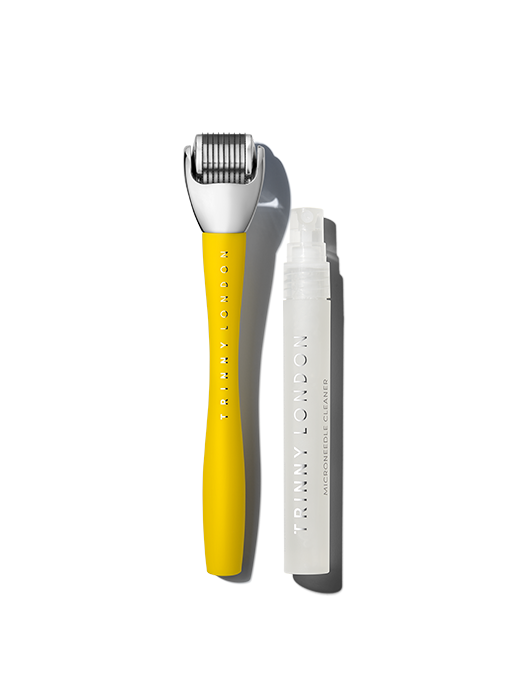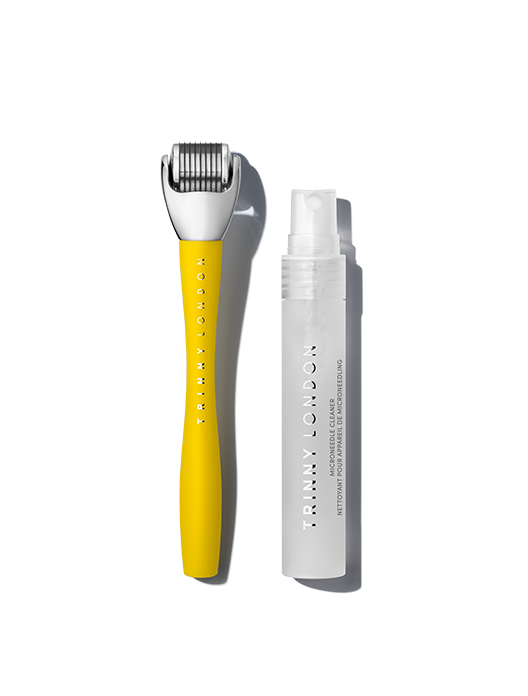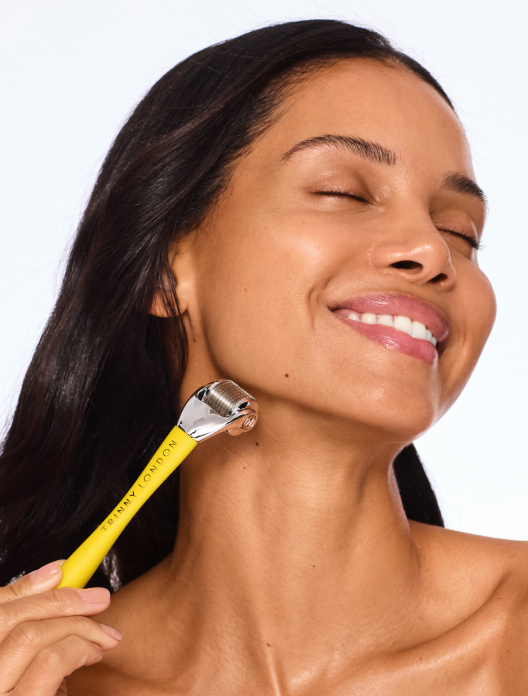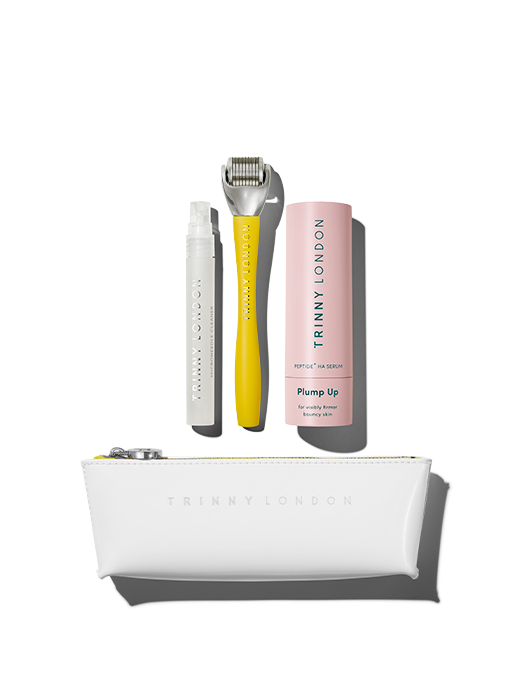

Plump Up Microneedle 0.5mm
At-home microneedle tool for firm, smooth skin

The world of skincare, treatments and procedures has never been easy to navigate – and with hundreds of myths and not-so-successful stories being spread like gossip in a school playground, it’s no surprise that microneedling (also called ‘dermarolling’) can sometimes be painted in an unfair, scary light. Fear not, we’re here to help guide you through the maze of myths and misconceptions.
Myth: people with sensitive skin should still regularly microneedle.
A hotly contested topic in the beauty industry, microneedling with sensitive skin is as divisive as whether the chicken came before the egg. Our take? No, you shouldn’t be microneedling if you have sensitive skin. “Sensitive skin means you have a compromised skin barrier” explains Fiona Brackenbury, skin expert. “This means there’s a weakness in the top layer of skin. If you have sensitive skin, you’d be better off strengthening the skin barrier before you think about microneedling”.
The time it takes to repair your skin barrier depends on the degree of damage and how compromised your skin barrier is – this can be caused by many factors, such as too much sun exposure or using acid exfoliants that are too strong for your skin. To strengthen your skin barrier, consider stripping your skincare routine back to basics. Focus on cleansing and moisturising thoroughly (and don’t forget your SPF!) – and saying goodbye to exfoliants and vitamin A or C until your skin has repaired. When your skin stops feeling warm, tingling or looking red, your barrier should have repaired itself.
Myth: microneedling isn’t safe to do at home.
Understandably, there’s a lot of hesitation when it comes to microneedling at home. We admit the thought of microneedling can seem a little intimidating, but we promise once you’re confident in your technique, you’ll be on a roll (pardon the pun).
As with all new skincare and treatments, the golden rule is: always listen to your skin. Does it feel tingly or sensitive? Is it looking a little more red than usual? If so, it may be best to skip this evening’s microneedling session. If you’ve done something that may have angered your skin, such as waxing or going in a sauna, then hold off on microneedling until your skin has calmed down. It’s important to educate yourself on the microneedle you’re using – this means feeling comfortable with how to hold it, how often to use it, and when your skin isn’t happy enough to roll again.
The needles on an at-home microneedle can range from 0.25mm to 0.55, and they’re just deep enough to reach the epidermis. As the needles only target the very top layer of skin, this means they’re safe to use at home, compared to an in-salon microneedle where the needles are long enough to reach the dermis (1mm to 2mm). Due to the longer length of the needles and the potential damage it can cause, it’s important these microneedles are only used by a professional.
It’s also important that your microneedle is clean. This means thoroughly cleaning it after every use and storing it properly – preferably with a protective cap. We’d also recommend rinsing the head with warm water before every use.
Myth: sun is the enemy of microneedling!
Technically this myth is true – to a degree. Like lots of potent skincare and skin treatments, microneedling can sometimes make your skin more sensitive to the sun. This is why we’d never recommend microneedling during the day. To keep your skin happy and healthy, always microneedle in the evening – this means your skin has the whole night to restore itself, and you can wake up to sensational skin. You should always wear SPF every single day, whatever the weather, and this is especially true the morning after a microneedling session.
Myth: you should microneedle every evening.
While it may be tempting to microneedle every day to reap the rewards, we really wouldn’t recommend it. “You shouldn’t be microneedling every day, even if you’re not a beginner” explains Fiona. “It’s really important to have rest days. No one’s skin can handle microneedling every single day”. It’s important to allow your skin time to rest and recover, so we’d suggest waiting at least 24 hours before you consider another session. We’d also recommend taking at least a one month break after every eight weeks of microneedling to give your skin the opportunity to rest and regenerate.
Myth: everyone can microneedle.
As we age, our skin changes, and this can affect how we react to certain treatments and skincare. “We’d suggest no one younger than 18 should use a microneedle” says Fiona. “If you’re mid-70s or above, your skin is thinner, dryer and more sensitive, so you should use your microneedle less frequently too”.
Shop the article


At-home microneedle tool for firm, smooth skin


At-home microneedle tool for glowing, plump skin

Microneedle, peptide serum and beauty bag

Everything you need to care for your Plump Up Microneedle